The meaning of occupational therapy might not be immediately obvious at first glance. For most of us, the first thought that comes to mind would probably be related to the meaning of occupation as a job or employment.
However, as occupational therapist Hongsian Ong explains, “Occupations refer to the everyday activities that people do as individuals, families, and communities, to occupy time and bring meaning and purpose to their lives. Occupations include things people need to, want to, and are expected to do.” Occupational therapy is a form of therapy that helps people foster the skills required to perform activities essential to daily life. This could mean rehabilitating people who have gone through an illness or an accident back to independence in daily life, as was the case in Hongsian’s role before joining ELG.
At ELG, Hongsian divides his time between the full-time program, where he assists learners with special needs to develop the life skills needed to get through their day at school or at home with ease, and services in the community, where he provides assessments, consultations, and occupational therapy to children with a range of needs.
Since every child coming through ELG has different needs, Hongsian’s days are never boring. Hongsian has regular meetings with program leaders to provide consultations. Before beginning occupational therapy, he observes children in their natural environments, usually their ELG program activities. With this information, he tailors his methods to best suit each learner’s needs and circumstances.
To better understand how this all works, let’s take a look at what one day is like for Hongsian in his role as an occupational therapist:
8:00 – 9:00 am
Hongsian arrives at ELG and begins preparing for the day. He meets with a program leader to discuss the day’s plan.
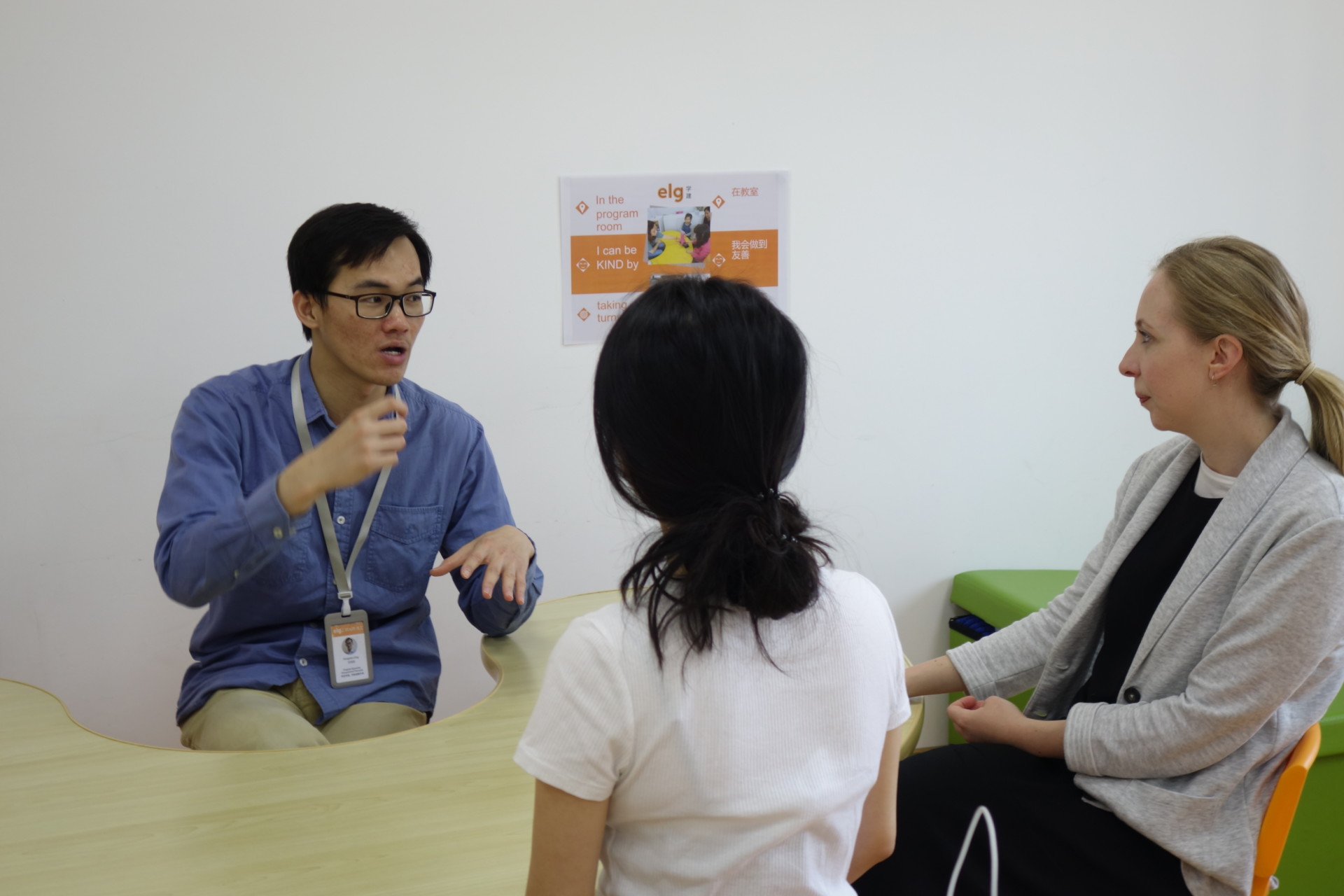

9:00 – 9:30 am
The first session of the day is a push-in occupational therapy session. For push-in sessions, Hongsian accompanies and supports an individual learner while they carry out activities in a group environment, such as a class.
In today’s session, he is helping a child who has an attention problem. The child is easily distracted, and because he has high sensory needs, often wanders around during group activities without completing his assigned tasks.
To assist the child, Hongsian provides him with sensory accommodations. Every ten minutes or so, Hongsian pulls him aside from the group and plays games that stimulate his sense of balance or coordination. Afterward, the child goes back to the group activity to focus on his task.
Hongsian also senses that the noisiness of the room might be distracting the child, so he gets a noise reducing headset for him. The child is looking restless, so Hongsian brings over a fidget spinner for him to play with and a Swiss ball for him to sit on, to provide him with some sensory stimulation. This helps the child calm down and focus on the lesson’s instructions.
9:30 – 10:00 am
Next up is a pull-out therapy session. As opposed to a pull-in session, a pull-out session consists of Hongsian taking an individual child out from a group environment to focus on helping them improve skills they need to work on in an isolated environment.
Today, he has planned an obstacle course for a child who has a delay in motor skill development. This delay has resulted in the child having low confidence and a sense of insecurity because he isn’t able to keep up with his peers during physical activities.
To address this, as the learner makes his way through the obstacle course, Hongsian provides “just right” assistance, which means just enough physical support for the obstacle course to be challenging, without it being so difficult as to make it demotivating. This way, the learner can slowly improve his motor skill functions, while still accomplishing his task, thereby building confidence.


10:00 – 10:30 am
Hongsian has another pull-out session lined up. This child is three years old and is very sensitive to touch. He always refuses to take off his shoes for activities in the gym.
To help acclimate the child to taking off his shoes, Hongsian first plays with toy trains with him, which he knows the child likes. Slowly, Hongsian pretends to accidentally take off the learner’s shoes. He apologizes and says, “I’m sorry, I’ll help you put on your shoes. But first, we have to put away the trains before you put on your shoes.” As the child is now preoccupied with a fun task, he doesn’t feel as strongly about needing his shoes back on right away.
Following that, Hongsian tries to get the child to take off his shoes again to play on the swing, which is another favorite activity of his. This time, the child starts to get upset. Helping children deal with difficulties in emotional regulation is a regular part of Hongsian’s role as an occupational therapist. As Hongsian has worked with this learner before, he talks him through it before continuing, to make sure he can keep his emotions from escalating.
10:30 – 11:00 am
A group session is next on the schedule. This session is for an early intervention group of learners, whose ages range from three to six years old.
For group sessions, Hongsian fosters group environments where children learn how to have healthy interactions with each other under his guidance.
In this session, Hongsian uses play therapy to help the children learn social skills and turn-taking while helping them explore their bodies and their environment. The games also allow Hongsian to guide these young learners to explore and develop their different senses.

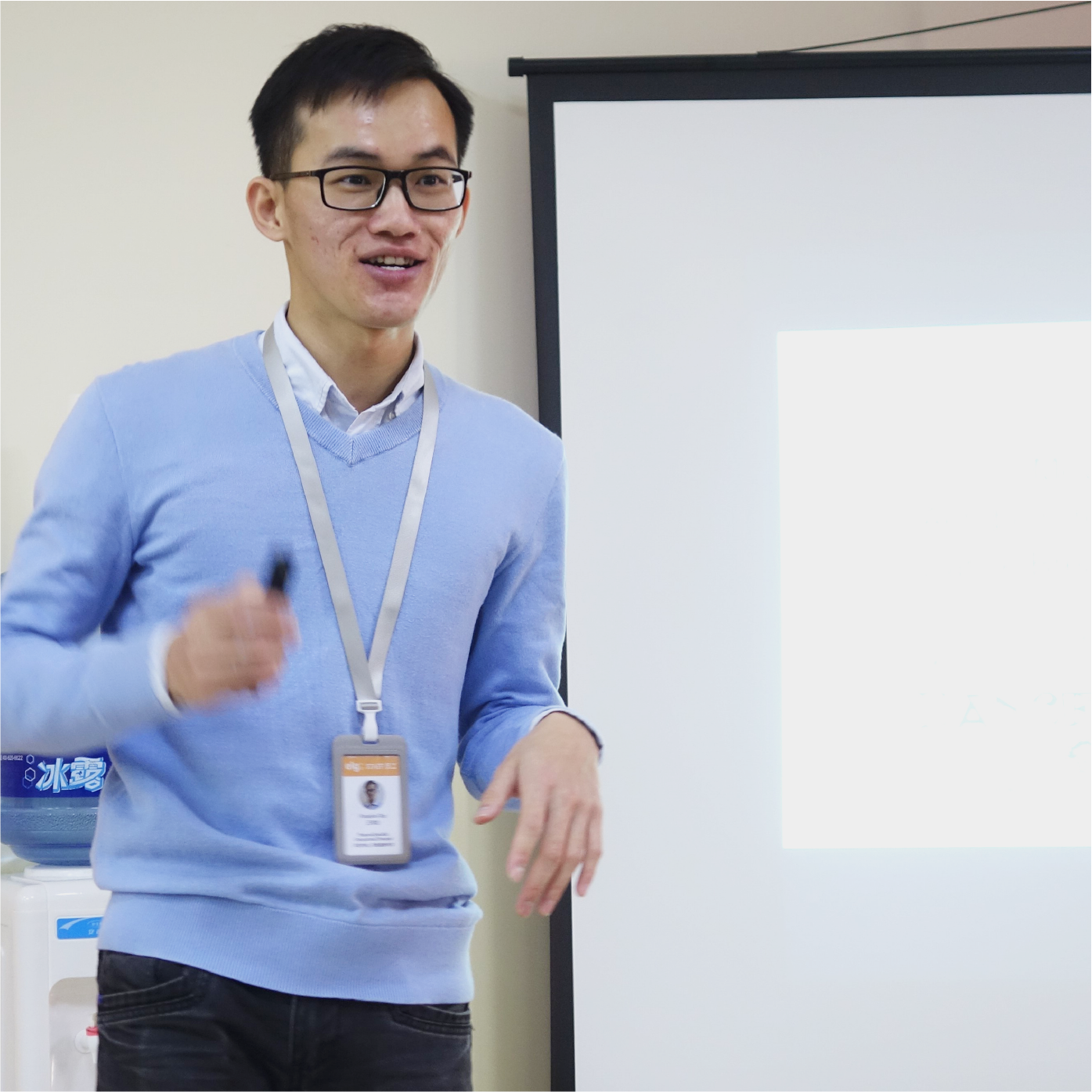
11:00 – 11:30 am
Hongsian now has a group session with learners in the life skills program. These learners range from teens to young adults.
This group session allows the learners in the life skills program to learn to interact with each other and increase their physical activity. Hongsian guides the learners to hold a discussion on what game to play together, working on social skills while preparing for the physical tasks ahead. After talking it through, they agree on a game of tag.
11:30 am-noon
After the last group session, Hongsian is back to another individual session. This time, he’s helping a learner with motor development delays.
The child has difficulty imitating movements and positions due to his poor proprioception, which is his sense of the relative position of his body parts and strength during a movement. As a result, he has difficulty tying a knot, an important skill for tying shoelaces, which occupational therapists consider an ADL, or activity of daily living.
With tying a shoelace knot as today’s task for the learner, Hongsian conducts what is called an activity analysis, breaking down the action step-by-step and figuring out which tools would make the skill easier to learn. Through prior consultations and observations, Hongsian had determined that the learner has the skills for the activity, but has just been discouraged.
To teach this learner, Hongsian uses back chaining. This means that he first makes the ribbons on the shoelaces and then gets the child to put the loop through the hole. Once the child is able to do that successfully, Hongsian teaches him to make the ribbons. Through this process, the learner can complete and learn all parts of the action separately, before gradually putting it all together.
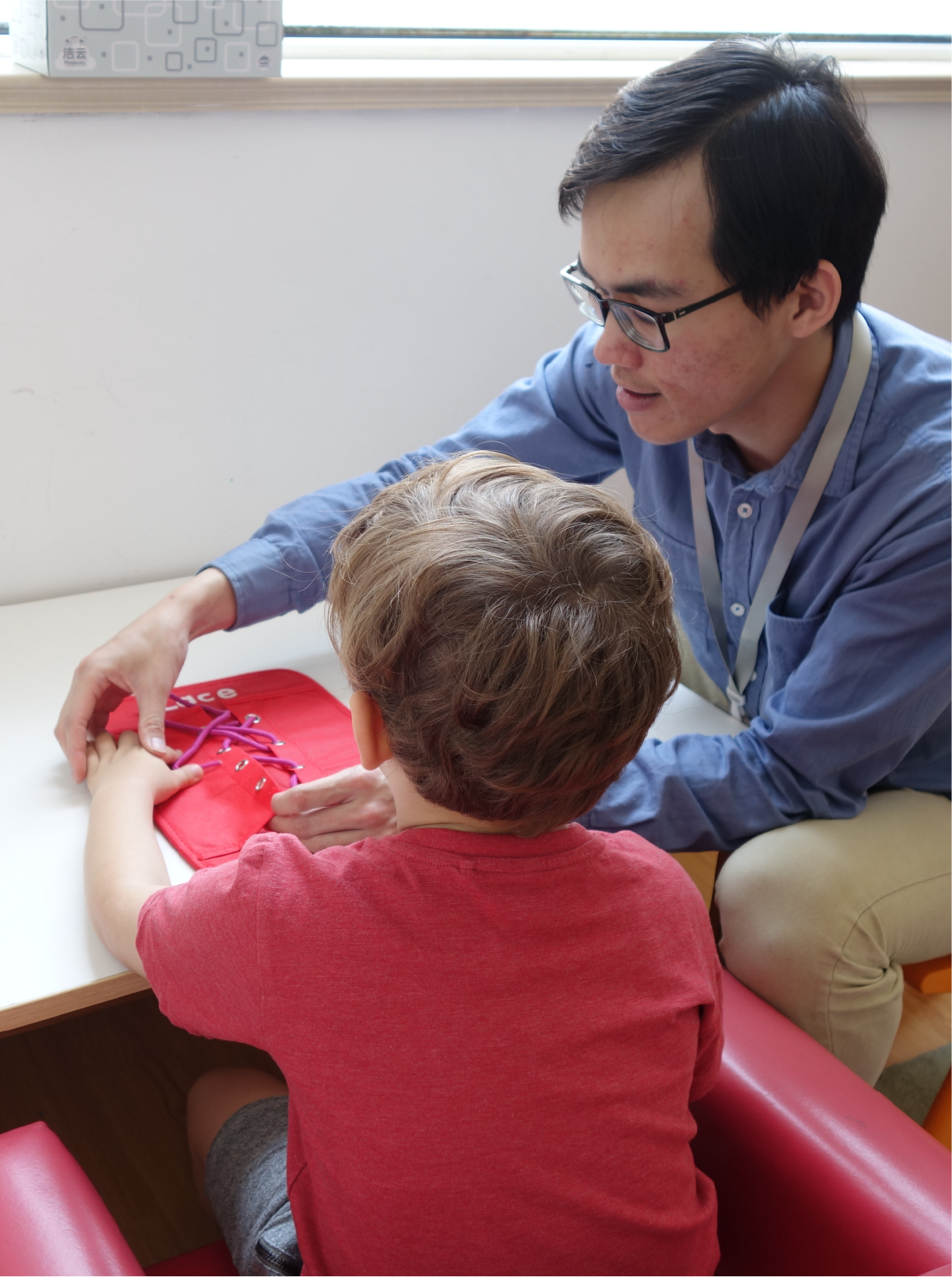
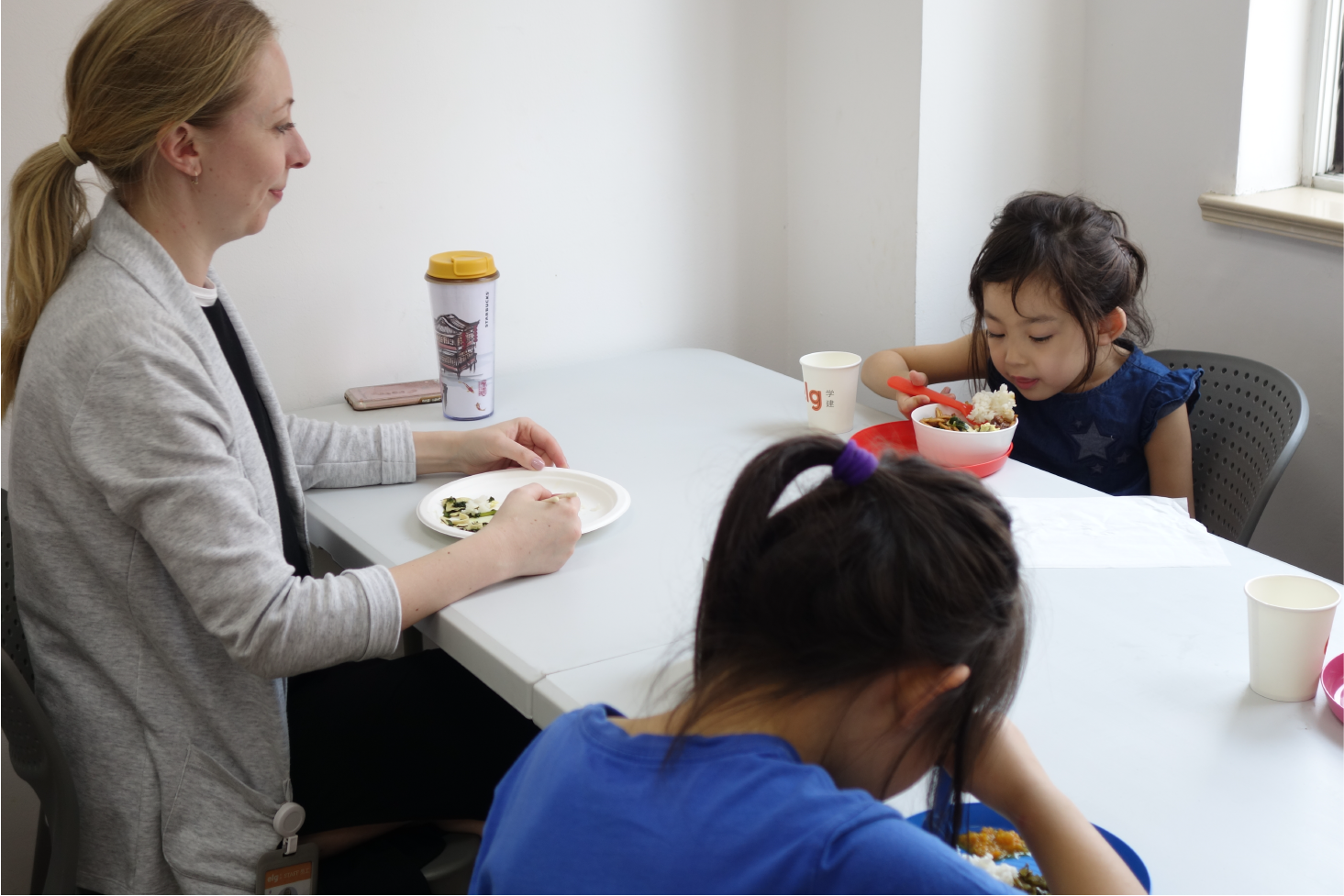
Noon – 1:00 pm
It’s finally lunchtime. For Hongsian, this break also provides a valuable opportunity to observe his learners reacting to their natural environment. This allows him to gain further understanding of their needs and behaviors.
1:00 – 3:00 pm
After lunch, Hongsian gets back to his occupational therapy sessions. These sessions follow the same format as the half-hour long pull-in/pull-out individual sessions and group sessions from the morning. Every session is unique and tailored towards the specific needs and developmental stage of each learner or group of learners.
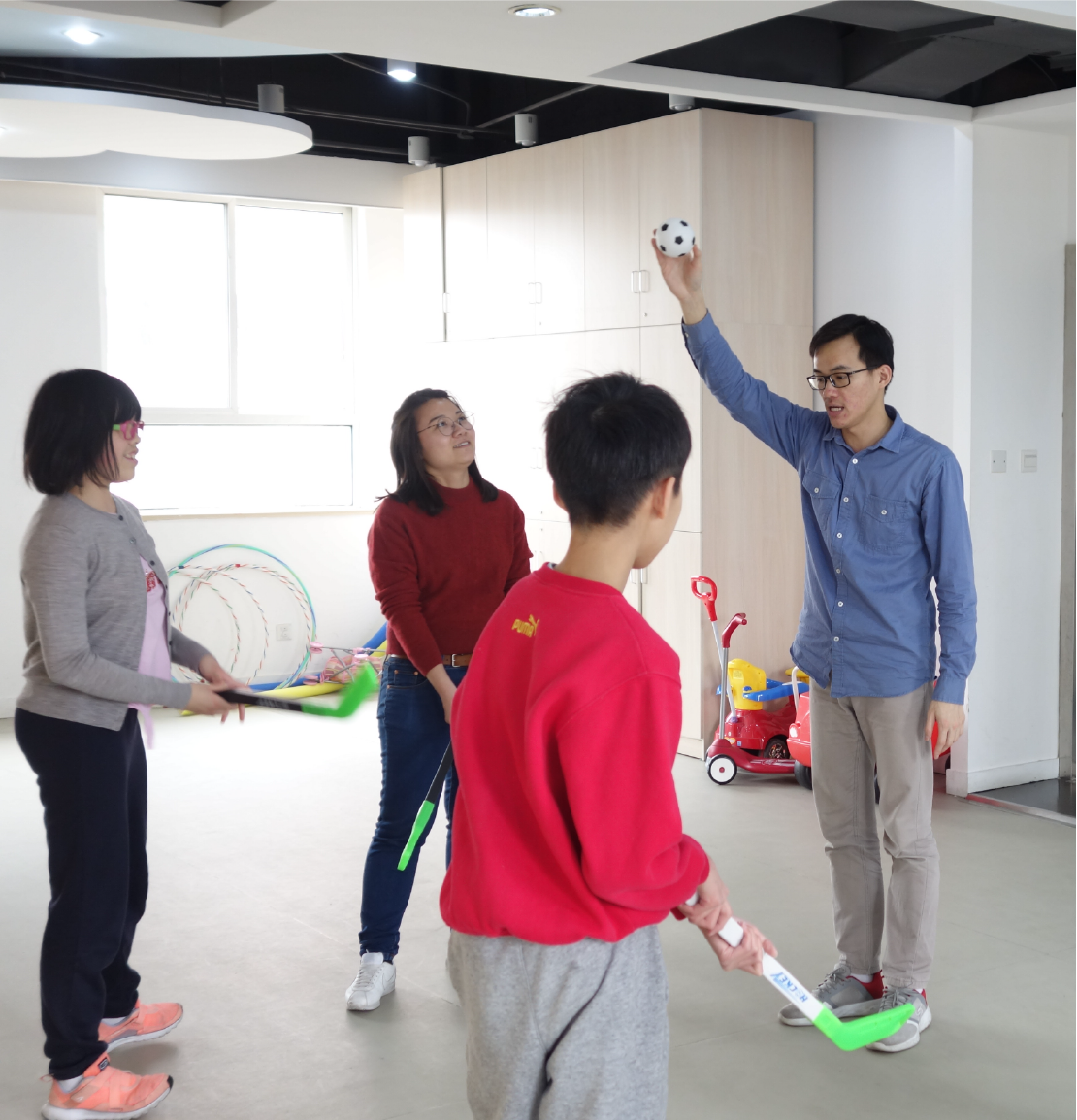
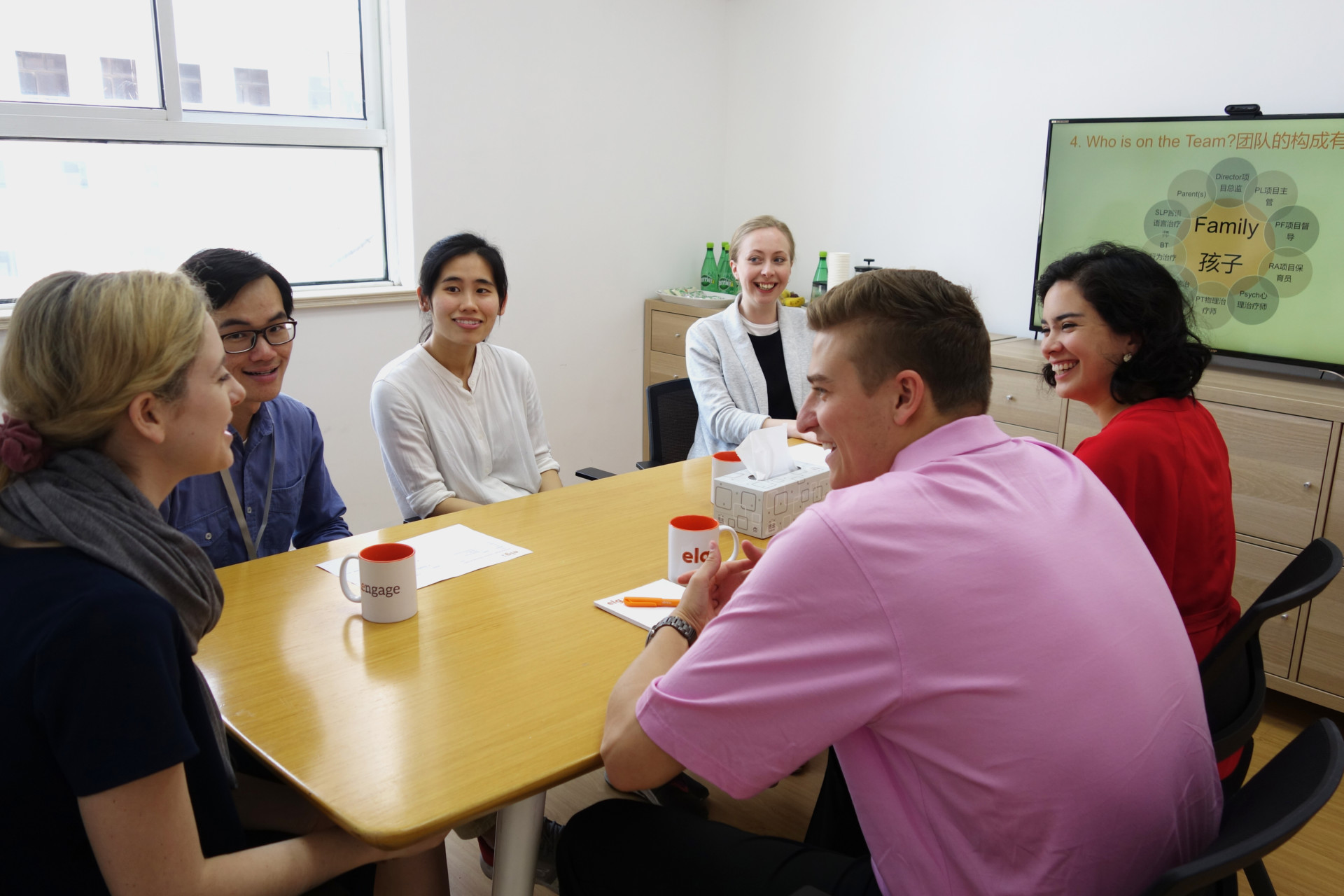
3:00 – 4:00 pm
Before wrapping up his day in the program, Hongsian attends an IEP (Individualized Education Plan) meeting. This is where Hongsian meets with all the people involved with an individual learner, such as speech-language pathologists, the program leader, the program facilitator, and the child’s parents. These meetings are held as a roundtable and involve discussion of the child’s specific needs and goals, and how to optimize the team’s approach towards meeting these. For each child, an IEP meeting is held every six months to evaluate their progress and make adjustments where necessary.
On days that he doesn’t have an IEP meeting, Hongsian documents the performance of the learners he’s worked with that day, to facilitate his planning for other days, contribute to IEP preparation, and communicate with the child’s therapy team and parents.
4:00 – 5:00 pm
Often, after his day at the program department, Hongsian has sessions with clients in ELG’s services department. These sessions are on a more flexible schedule, outside of the program department’s hours. Today’s session will be held at the client’s home, so Hongsian makes his way over.
The parents greet him and welcome him in. They tell Hongsian that their daughter has writing difficulties. Her illegible handwriting has made it difficult for her to keep up at school.
Before he can begin therapy sessions, Hongsian must first assess the underlying cause of this issue. Could it be a problem with visual processing, poor handwriting posture, uncoordinated finger movements, or a combination of these?
After getting more information from a sit-down chat with the parents and observing the child around the house, it becomes apparent to Hongsian that her visual processing is the root cause of her difficulties. He asks her to look at the chair in front of her and tells her to move her focus to his finger. She finds it hard to regain focus on his finger. When she reads from the first paragraph of her schoolbook, her visual focus jumps from line to line.
Hongsian understands that motivating children to participate in tasks during therapy is very important for effectiveness. Therefore, part of his job is to come up with training methods that are captivating, rather than tasks that children would usually do at school.
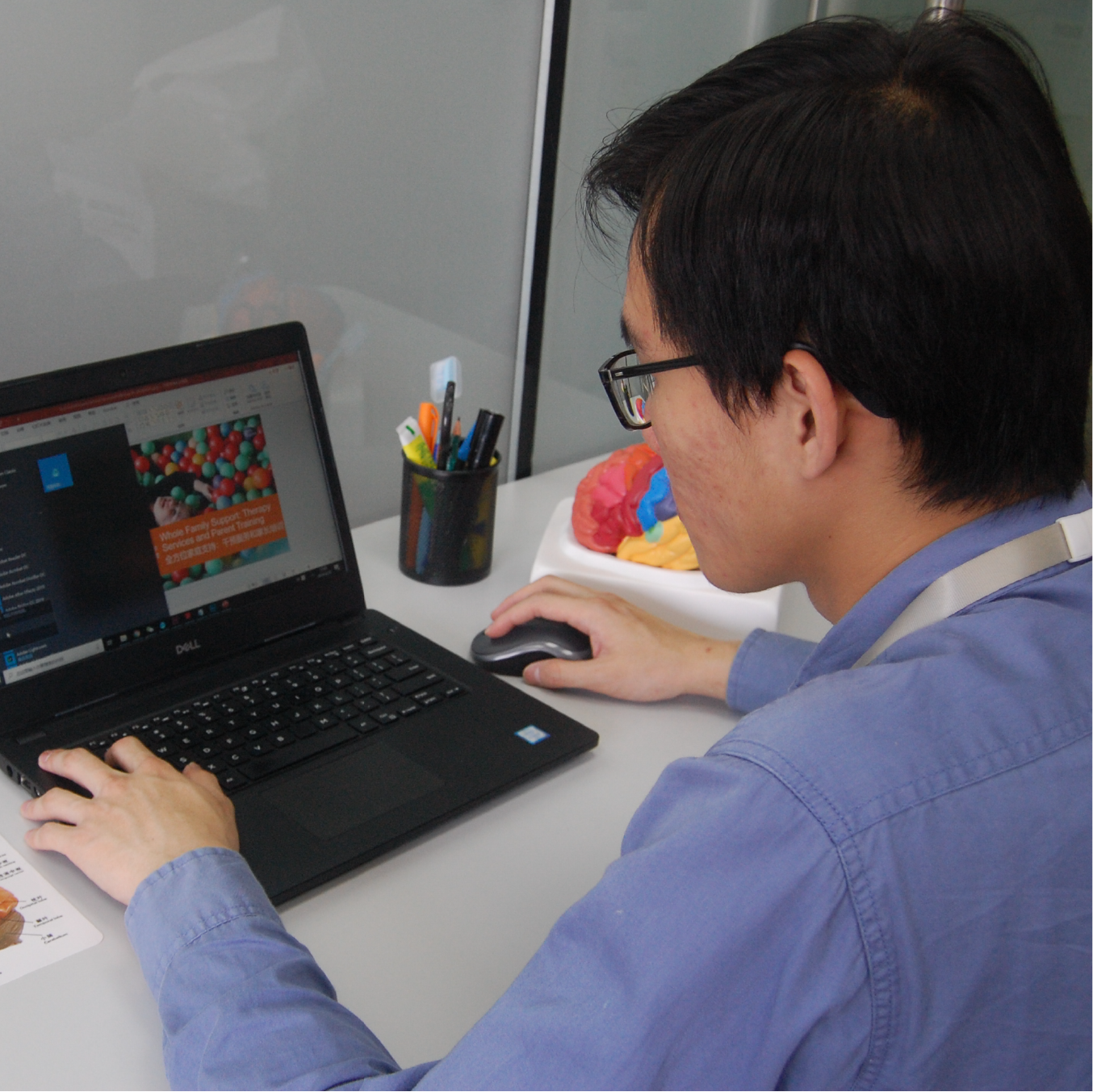
For this therapy session, he begins with the classic cups and ball trick, where he hides an object in one of three cups, shuffles them around, and gets the child to guess where the object is. He starts slow, initially moving the cups around at a pace that the child can keep up with visually, then gradually increases the shuffling speed.
Next, they play a game where he gets the child to follow his laser pointer around a wall. He traces the shape of different letters and gets her to call out what he’s tracing.
Wrapping up, he takes some notes on her performance before sitting down to talk to her parents about what they can do to help improve her visual processing. He writes down his plan for their next session and discusses it with them before leaving.
Every child is unique. Even for children with the same diagnosis, different techniques and methodologies within occupational therapy may be more effective than others. Hongsian must thus be creative, knowledgeable, and patient throughout the day, every day, to help children grow and improve their skills.
